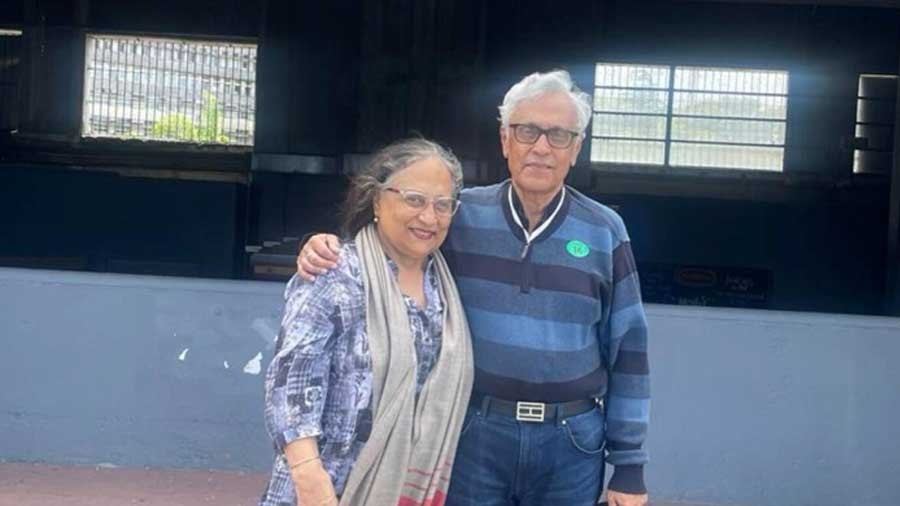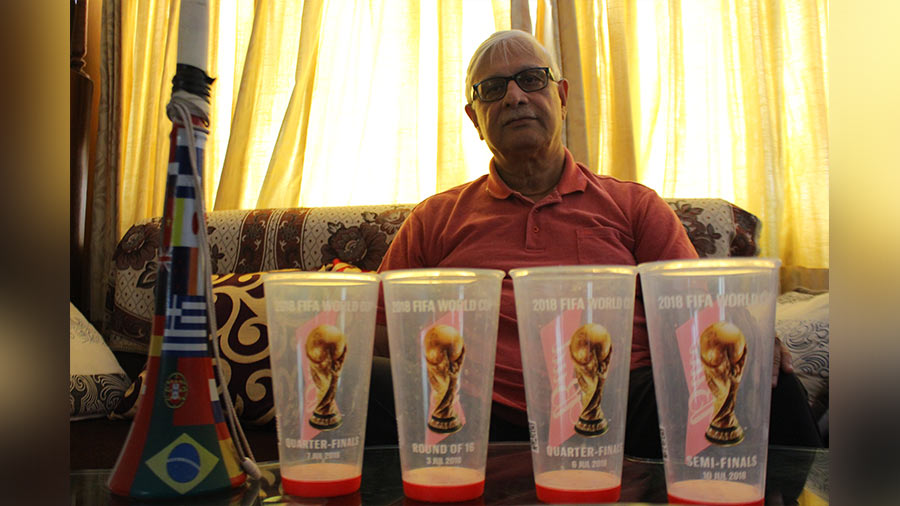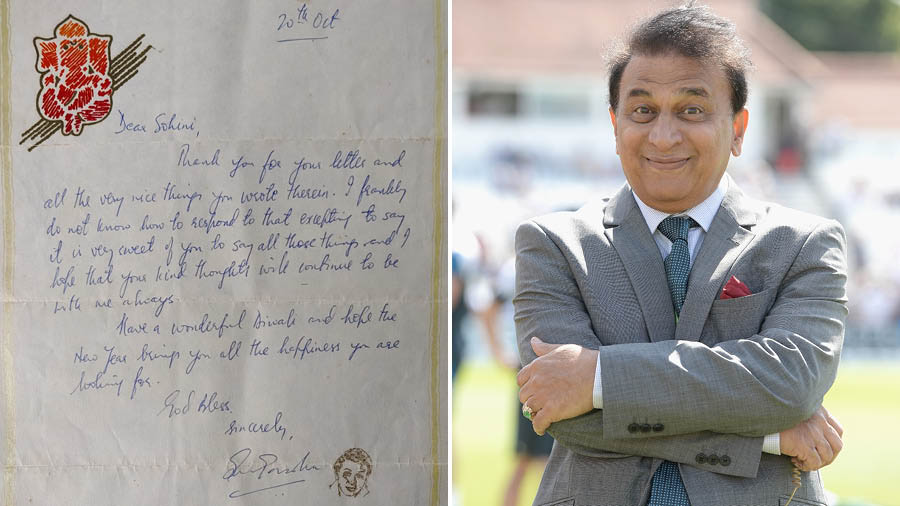Sunil Gavaskar and Gundappa Viswanath. Sachin Tendulkar and Sourav Ganguly. Virat Kohli and Rohit Sharma. Smriti Mandhana and Harmanpreet Kaur. Indian cricket has enjoyed its fair share of impressive partnerships over the years. But there is one particular cricketing jugalbandi that has endured for longer than all these pairings combined. A partnership that has excelled in all conditions and formats, from Test cricket in England to ODIs in Australia to IPL in India. There may be no rotation of strike in such a partnership, but there is rotation of household duties to ensure that neither misses out on their favourite parts of the action. When in stadiums, the rotation extends to clicking photographs of each other, occasionally with some of the greats of the game. This is a partnership of fandom, of a mutual obsession being acknowledged, nurtured and sustained.
This is the partnership of Indrajit and Susmita Mookerjee, two cricket fanatics from Ballygunge, who have been married for more than five decades. Their love for cricket began long before the sport had seen the World Cup or they had seen each other.
Indrajit, who is the vice chairman of Texmaco Rail & Engineering Ltd, saw his first cricket match aged nine at the Eden Gardens in 1958, when India hosted the West Indies only to get thrashed by an innings and 336 runs. “Back then, going to the cricket was like going for a picnic. We had to stand in long queues and I remember packing bread and boiled eggs. As for the match, it was a massacre,” recalls Indrajit, as he proceeds to rattle off the scores of individual batters from the match faster than they can be read off Cricinfo’s archives! “I can’t forget Rohan Kanhai’s 256. He was caught by Polly Umrigar off the bowling of Surendra Nath. Three of the West Indies’ top six scored centuries, including Garry Sobers and Basil Butcher,” pinpoints Indrajit.
Cricket happened to Susmita — one of the cornerstones of the St. Jude Child Care Centre in Rajarhat — a few years after Indrajit, in Kanpur. “I was in the sixth standard at the time and I fell in love with cricket right away. It was a fairly long journey to the Green Park Stadium [to cheer for India against Australia] and I almost fell off the rickshaw on my way to the ground! Once there, one moment stood out for me. The Indian wicket-keeper, Budhi Kunderan, had dropped a catch and the crowd began to jeer him. He had his head down for several minutes and there may even have been tears in his eyes,” recollects Susmita.
When West Indian cricketers started running on Red Road…
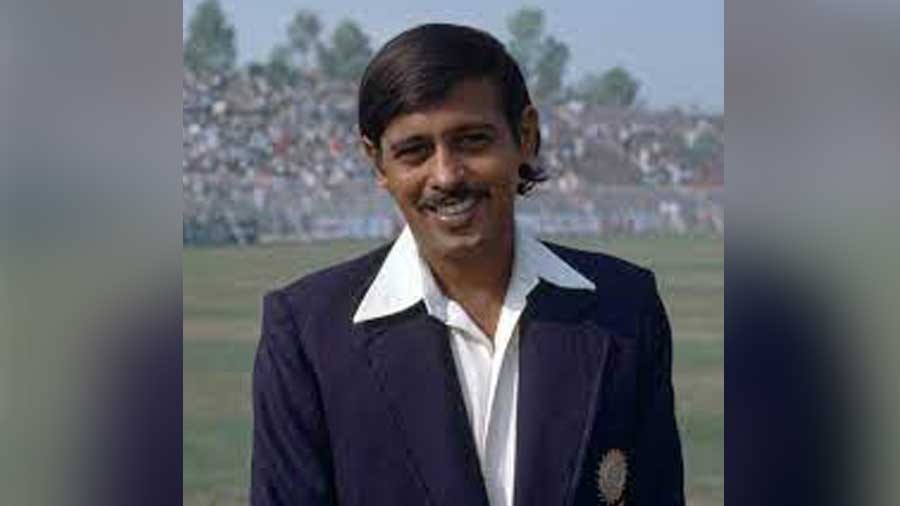
Srinivas Venkataraghavan was a former colleague of Indrajit, with the two becoming friends long before the former captained India Facebook/ICC
The first time Indrajit and Susmita watched the same match at the same place (albeit not together) was the infamous Eden Test between India and the West Indies that got underway on the last day of 1966 and concluded on the fifth day of 1967. “The authorities had oversold tickets for the match and many fans got into Eden without a pass. The chaos reached boiling point when fans started entering the field of play and had to be lathicharged,” says Susmita, her voice capturing the panic she must have felt as a teenager back then. “It was my first experience of being teargassed. Everyone was running helter skelter, including the West Indian team, who were found running on Red Road!” says Indrajit, largely unperturbed. “[Mansur Ali Khan] Pataudi had taken the Indian team back to the hotel… I had to walk all the way back to Hastings with my uncle, as we couldn’t get any transport,” adds Susmita.
Indrajit punctures the momentary tension with his typically understated humour, narrating an incident about Srinivas Venkataraghavan, Indrajit’s former colleague and good friend, who captained India during the first two men’s World Cups: “This was before Venkat had become skipper, when India were playing a Test in Kolkata and the team was staying at The Great Eastern. On the eve of the game, Venkat found out that he had been dropped. He gave me a call and asked me to meet him. When I did, he said: ‘Let’s go buy some Chinese shoes [they were in fashion back then].’ I agreed and we decided to go to a shop at the basement of the Ritz Carlton, which is The Peerless Inn today. Hearing our plan, Dilip Sardesai joined us. Before I knew it, I was driving two Indian cricketers in my second-hand, rather, umpteenth-hand Standard Herald! We were stopped by the police, who couldn’t recognise the cricketers, but we eventually managed to get our shoes.”
Receiving a reply from Don Bradman
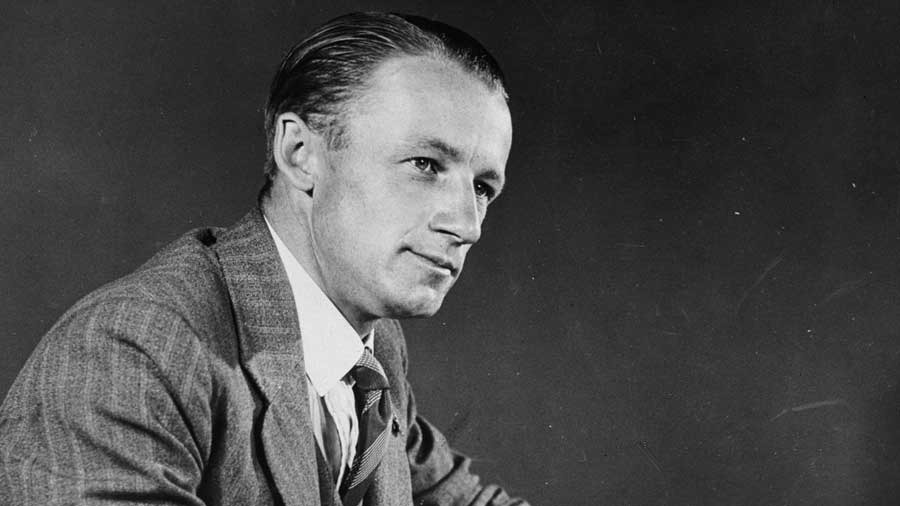
Don Bradman wrote back to Susmita three weeks after receiving her fan mail Getty Images
After marriage, Indrajit and Susmita started attending Test matches wherever they were based in India. From Kolkata to Mumbai, Bengaluru to Chennai. When in school, Susmita had, largely through a flight of fancy, written to Donald Bradman, expressing her admiration for the Don. To her elation, she had received a handwritten reply from the man himself three weeks later. That memory became even more special when Susmita, with Indrajit for company, visited the Don Bradman Museum in Australia a few years ago. Even though the couple never witnessed Bradman play, they have read just about everything there is to read about him, including Jack Fingleton’s masterpiece, Brightly Fades the Don (1949).
The Mookerjees’s love-affair with cricket has flourished in the country that was on the receiving end of Bradman’s genius. “We have seen numerous games in England. The Oval (in London) is the most convenient, since it’s next to a tube station. That’s also where we saw our first World Cup game in person, when India faced Australia in 1999. We had actually left the stadium in the middle because India were playing horribly, reduced to 17 for four in pursuit of 283. Then, we heard that Ajay Jadeja was going great guns and returned to watch him score a century. But India still lost. In fact, India usually lose when I watch them play, including at this year’s ICC World Test Championship final,” rues Indrajit, who once wore a Leicester club jersey while attending an India game in Leicester to ward off bad luck. “I think India lost that one, too,” he chuckles.
Teaming up with Kapil Dev and admiring Sunil Gavaskar

Over the years, the Mookerjees have met cricketers of different generations and vintage, from Gavaskar, whom they both admire, to Mike Brearley, Mark Taylor and Glenn McGrath. Indrajit has even played with Kapil Dev — golf, not cricket. “We teamed up and won the Sahara Cup a few years ago. I’ve also played with Kapil at Tollygunge Club (where Indrajit is a former president), where Jacques Kallis also joined us.” When speaking about players they cherish most (apart from Gavaskar), Susmita mentions Ajit Wadekar. Indrajit speaks highly of Viswanath, Nasser Hussain, Rahul Dravid and Mahendra Singh Dhoni. Until a few months back, the couple had one of their fiercest debates over Kohli, with Susmita believing that Kohli’s best was behind him even as Indrajit backed his man, since “form is temporary, but class is permanent”.
About the ongoing World Cup, both have been thrilled to watch Afghanistan in action. “In many ways, they’ve done what India did in 1983,” observes Indrajit, for whom the “1983 win was the biggest gamechanger” as the triumph made “orthodox cricket fans like us take ODIs seriously, as something more than cricket’s version of instant coffee”.
One final cricket-watching fantasy: Ashes in Australia, 2025-26
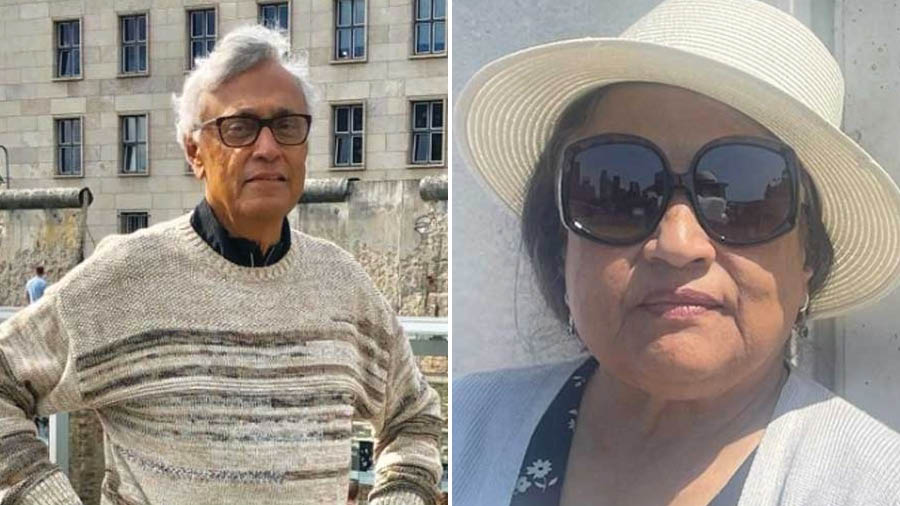
Indrajit and Susmita are gearing up to go to Australia to witness the next Ashes series in person Indrajit Mookerjee
Even though Indrajit and Susmita continue to consume every Team India match with undivided attention, they feel “cricket is losing its aura”. For Susmita, it is mainly down to the hyper commercialisation of the sport. “I don’t want to see cricketers on hoardings,” she says. Indrajit disagrees: “It’s inevitable, given the money in cricket. And the same thing applies to tennis and football as well.” For Indrajit, the fading away of the essence of cricket has more to do with ambience than affluence. “Watching cricket in India meant sipping a cup of tea in winter and relishing the experience. If you were watching in England, it’d mean having a beer in the middle of summer while the action progressed. Cricket was about a certain temperament and tempo. I don’t think that’s there anymore, especially with things like timing batters out and Mankading [running a non-striker out when they have left their crease before the delivery has been bowled],” says Indrajit. Rather, he continues, “cricket viewing for me has separated into two kinds of experiences. The first involved watching West Indian fast bowlers running in from near the boundary line as dusk settled on Eden and the sound of ships setting sail floated in from close by. The second involves watching sixes fly in all directions as the green carpet at Eden shines under lights during an IPL match.”
As their stadium visits gradually trickle down — the couple are taking in this year’s World Cup matches at Eden on TV rather than at the ground — the Mookerjees have one final cricketing fantasy: “We want to be present for an Ashes Test match together. Our goal is to go to Australia for the next Ashes series in 2025-26.” Given their track record as a partnership, it is safe to say that even if Joe Root or Steve Smith do not make it to the next Ashes Down Under, the Mookerjees will.
